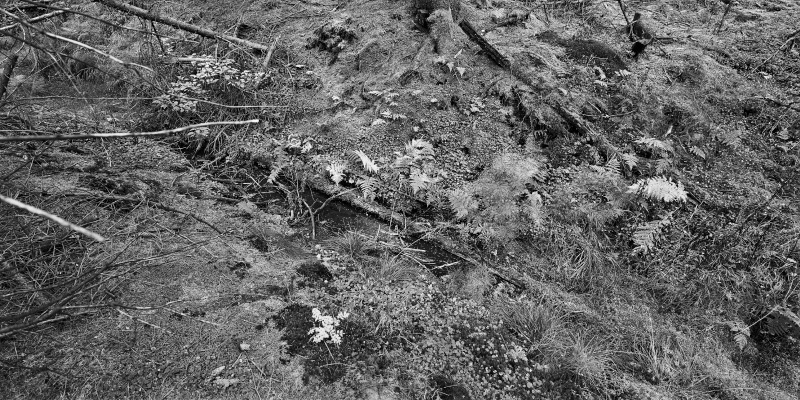Ibra Ibrahimovič (1967) has been photographing his black-and-white series ”Střepy severních Čech” (Pieces of Northern Bohemia) since the early 1990s. He became known to the public as a photographer of the struggle to save the village of Libkovice in 1993, and later in 2003 with an award-winning series about farmer Rajter.
With the support of the Ministry of the Environment and TGM WRI, the book Příběh fialové řeky (The Story of the purple river) was published in 2015, describing through photographs the turbulent fate of the Bílina river, perhaps the only river in our country that is said to have burned due to pollution. Ibra Ibrahimovič takes photographs mainly on black and white film, 6 x 12 cm, and thus tries to follow the pictorial message of Josef Sudek and Josef Koudelka, who recorded the local landscape in a similar way in the 1970s and 1990s.
In his wanderings around the Bílina river, he looks for places that tell of man‘s relationship to this river, as well as those that reflect its turbulent history. His goal is to testify to what this river, which flows in the vicinity of surface lignite mines and chemical plants, looks like today, because from his childhood, he remembers it as a dark sewer stinking of phenols.
The work is very time consuming, demanding on light conditions (reflections of the sun in the water), and therefore especially reliant on the weather. The photographing itself takes place mainly at the beginning of spring and at the end of autumn, when the trees – still or already – lack leaves, which allows views of the surrounding landscape and maintains the visual context.
The Bílina river, on its 83-kilometre-long course, was displaced many times and destroyed by wastewater from factories and mining operations. Its pollution reached tragic proportions during the Second World War, when a chemical factory was built near its riverbed in Záluží near Litvínov. During Allied bombing, the wastewater treatment plant was damaged and chemicals leaked into the riverbed for a long time. It served as a poisoned phenolic sewage system for local chemical plants until the early 1980s.
Today, the purity of the water in the Bílina river is almost standard. In contrast to other watercourses, it also contains historical traces of phenolic sediments and is polluted mainly in connection with industrial accidents.
Not even a kilometre of its flow is original. It rises in wetlands, former forest land reclamation from the 1970s, and can only meander on the slopes of the Ore Mountains from the source to Jirkov reservoir. However, even here in the deep forests, the regulation of its banks is evident, especially near the ruins of the foundations of Sudeten farm buildings.
From Jirkov it already flows in strengthened banks, often concrete. The last natural part of the river disappeared in the early 1990s, on the 16th to 18th km of the river, near Rtyně. At that time, the forgotten request of the Želany collective farm (JZD) was complied with and the riverbed was straightened and strengthened even against the will of the owners, who newly re-acquired the land around the river.
The positive news is that in the foreseeable future, after 35 years, the Bílina river will hopefully return from pipes to a new open channel on the three-kilometre section of the Ervěnice Corridor (in the vicinity of the Czechoslovak Army Mine, currently in the process of closing) and flow through shrubs and trees again.
The fate of the Bílina river captured in the photographs is a living project. The original book from 2015 has no end and is supplemented again and again by new stories and pictures.
The editorial staff thank Mr. Ibra Ibrahimovič for his kind permission to publish his photographs in VTEI.
March 2022
2019 – The Bílina river rises in wetlands above Černé jezírko near Mezihoří in the Ore Mountains, in an area of forest land reclamation from the 1970s

2020 – The inflow of the Bílina river into the Újezd reservoir, former Kyjice; the passage of a historic train to celebrate the 150th anniversary of Most Railway on the Most–Chomutov line
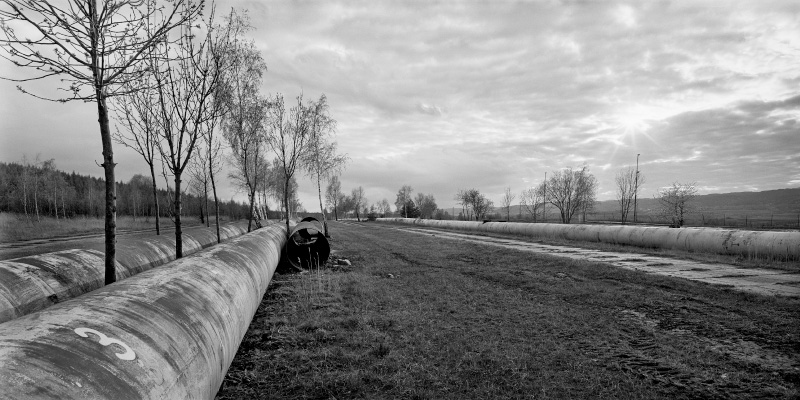
2018 – Along the Ervěnice Corridor, the Bílina river flows in pipes for three kilometres, within sight of the Czechoslovak Army lignite quarry
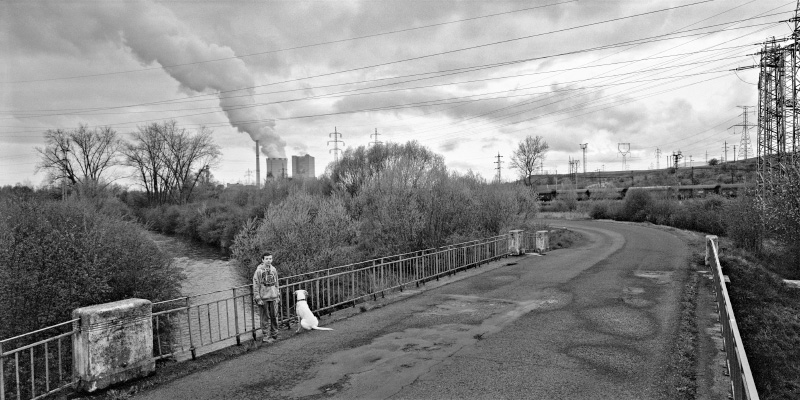
2016 – The flow of the Bílina river in the village of Světec, not far from Ledvice coal power plant
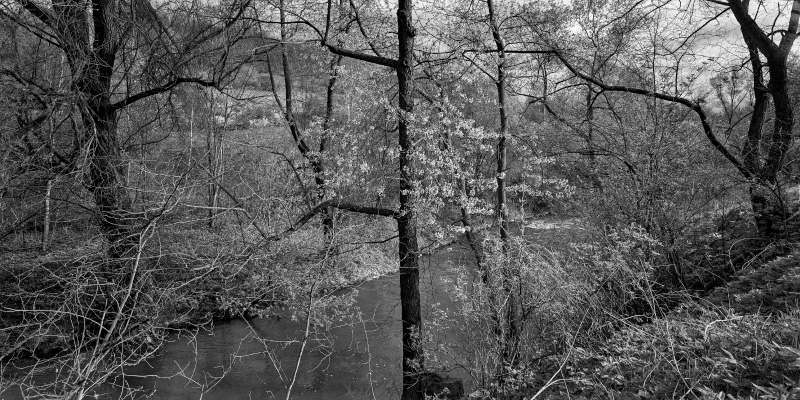
2017 – Bílina river, Úpořiny

2017 – Bílina river, Velvěty, the site of the former Lybar factory, today Czech Aerosol
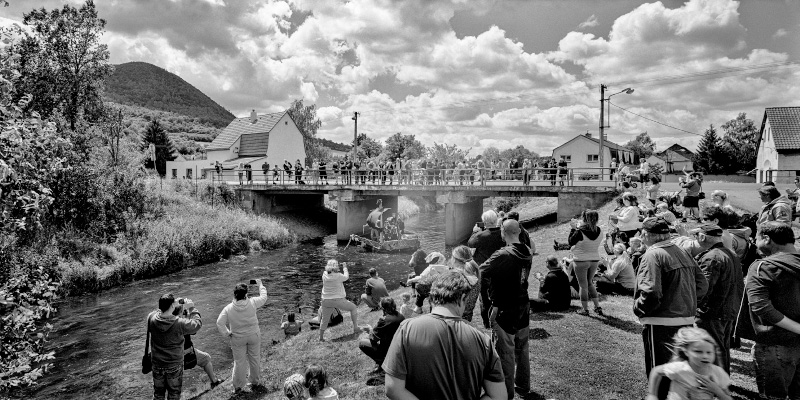
2019 – Želenice bathtub race on the Bílina river has a tradition since the 1980s (1st year – 1982), that is, since functional waste treatment plants were set up on its course

Ibra Ibrahimovič
Ibra Ibrahimovič got his name from his father of Albanian descent. He was born in the old town of Most in 1967 and grew up in the mining settlement of Meziboří on the slopes of the Ore Mountains, from where he still sets off to take photographs, and where his parents live. After completing the Secondary School of Mechanical Engineering in 1986, he began to photograph as a hobby. In October 1989, he returned from compulsory two-year military service, and in 1991 he left his job at the Záluží Chemical Plant and decided to take photographs professionally. At the beginning of his career, he worked closely with Zelený dům Litvínov, with the help of which he launched the ”Střepy severních Čech” project (Pieces of Northern Bohemia). He has been working on this ongoing project ever since. The best known are his series about the demolition of the North Bohemian village of Libkovice (1993) and the story of farmer Rajter (2002). He has also participated in a number of publications and exhibitions. Since 1995, he has lived alternately in Prague, where he runs a studio and a dark room with friends. Ibra Ibrahimovič has been free all his life and is co-raising one fantastic daughter.
www.ibraphoto.net
